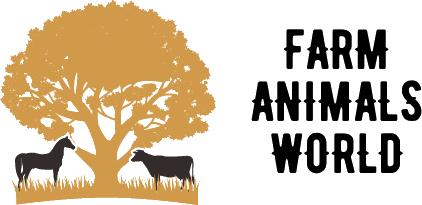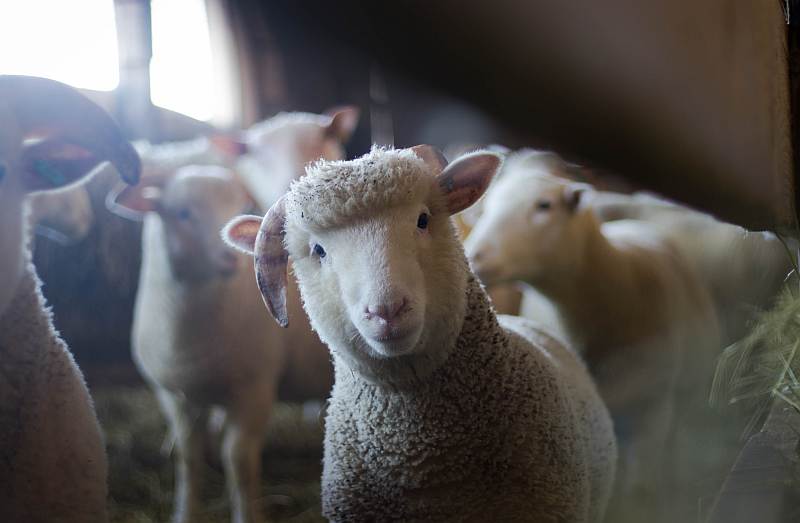You may not be aware, but the terminology used to describe a group of sheep varies significantly depending on the context.
Now, you’re probably familiar with the term ‘flock’, and rightly so. It’s the most commonly used term worldwide.
But did you know other terms are used to identify a group of these woolly creatures? While we’re accustomed to ‘flock’ due to its usage in literature and daily conversation, we’ll soon venture into less charted waters and uncover the other, lesser-known terms.
This exploration might change your perspective on these humble, grass-chomping animals.
Understanding Sheep Terminology
To fully grasp the concept of what is a group of sheep called, it’s crucial to understand some basic sheep-related terminology. You’re not just learning new words but diving into a rich, age-old tradition.
Sheep Herding Techniques, for instance, involve unique whistles, hand signals, and trained dogs to guide and control a flock. On the other hand, Lamb Rearing Practices, are all about nourishing young lambs to maturity.
You’ll need to know terms like ‘ewe’ for a female sheep, ‘ram’ for a male, and ‘lamb’ for a young one. These terms also extend to groups: a ‘flock’ typically refers to a group of sheep, while a ‘mob’ is often used in Australia.
Knowledge of this terminology is key to navigating the world of sheep herding and rearing.
The History of Sheep Group Names
Building on your newfound understanding of sheep terminology, let’s now explore the intriguing history behind the naming of sheep groups.
The origins of sheep naming stem from Old English, where a group of sheep was known as a ‘flock,’ a term still commonly used today. This terminology has historical significance, as sheep groups were central to the agrarian societies of the time. Herding sheep wasn’t merely a livelihood; it was a way of life, deeply ingrained in the culture and economy.
Over time, the term ‘flock’ has retained its relevance, symbolizing community, unity, and cooperation. The historical significance of sheep groups underscores the importance of these terms in understanding our pastoral past. So, every time you say ‘flock’, you’re echoing centuries of tradition.
Exploring the Term ‘Flock
Diving into the term ‘flock’, you’ll find it’s not just a simple label, but a term steeped in historical significance and cultural implications. It’s a reflection of the flock’s social structure, a hierarchical organization that’s essential for the sheep’s survival.
As social animals, sheep rely heavily on their flock for protection and foraging. Flock management techniques have evolved over centuries, adopting strategies to optimize the flock’s health and productivity. These techniques include careful selection of breeding animals and managing the grazing lands to provide optimal nutrition.
Understanding the term ‘flock’ is more than just knowing a collective noun for sheep. It’s about appreciating the social dynamics within the flock and the delicate balance needed in managing them.
Other Names for Sheep Groups
Venturing beyond the term ‘flock’, you’ll discover a variety of other names used to refer to groups of sheep, each with its own unique historical and regional connotations.
In sheep grouping etymology, terms like ‘mob’, ‘herd’, and ‘drove’ are common, depending on geographical location and sheep herding practices.
For instance, ‘mob’ is frequently used in Australia, reflecting the country’s extensive open-range sheep farming.
‘Herd’ is often used in North America, mirroring traditional pastoral practices.
‘Drove’ hails from the UK, a historical term for large groups of livestock driven over long distances.
Each term carries a rich tapestry of cultural and agricultural history, mirroring the diverse practices and traditions of sheep rearing worldwide.
Cultural Variations in Sheep Group Names
While you’ve learned that terms like ‘mob’, ‘herd’, and ‘drove’ are widely used to describe groups of sheep, it’s fascinating to note how these names can vary greatly based on cultural contexts and regional influences. This variation in the Regional Sheep Nomenclature is a testament to the diversity of human cultures and the integral role sheep have played in human societies throughout history.
Here’s a quick overview in a table for some of the interesting Sheep Group Names in Folklore and how they differ regionally:
| Region | Sheep Group Name |
|---|---|
| Scotland | Flock |
| Australia | Mob |
| Middle East | Drove |
| New Zealand | Band |
| North America | Herd |
This table provides a snapshot of the rich variations in the naming of sheep groups across different cultures.
Frequently Asked Questions
What Is the Lifespan of a Typical Sheep?
You’re curious about sheep lifespans. Typically, sheep live around 10-12 years. However, their intelligence and emotional depth can influence this, as healthier, happier sheep often live longer. It’s fascinating, isn’t it?
What Are the Different Breeds of Sheep?
You’re asking about different sheep breeds. They’re numerous, each offering unique wool varieties contributing to the global sheep population. Breeds like Merino, Rambouillet, and Suffolk provide diverse wool types for various textile applications.
What Is the Average Size of a Sheep Group or Flock?
You’re right to be curious about flock sizes. Utilizing sheep herding techniques and flock management strategies, a shepherd typically oversees between 30 to 100 sheep. However, flock size varies widely based on the farming environment.
How Are Sheep Used in Agriculture and Farming?
You’re utilizing sheep in agriculture for wool production and meat. Techniques like sheep shearing enhance wool production insights. They’re also vital for dairy products and land management, providing a versatile contribution to farming operations.
What Is the Behavior and Social Structure Within a Group of Sheep?
You’ll observe that sheep communicate primarily through vocalizations and body language. Their predation defense strategies are usually huddling together and fleeing. The social structure is hierarchical, often led by an older, experienced ewe.
Conclusion
So, in the end, you’ve learned that a group of sheep is known as a ‘flock’. This term has a rich history and varies across cultures.
For example, in Australia, they might refer to a large group of sheep as a ‘mob’. Understanding these terms broadens your vocabulary and deepens your appreciation for these woolly creatures.
So the next time you see a group of sheep, remember, you’re looking at a ‘flock’!

